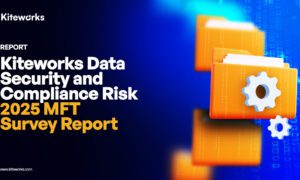Role management is a crucial aspect of cyber security that involves assigning specific roles to individuals within an organization to control access to resources and sensitive information. This strategy defines the responsibilities, permissions, and access levels of each user or entity within a network or system. It’s a structured approach that ensures only authorized personnel have access to specific data or functionalities, minimizing potential risks associated with unauthorized access.
Role management operates on the principle of least privilege, granting individuals the minimum permissions necessary to perform their tasks effectively. This practice significantly reduces the attack surface and limits the potential damage caused by a security breach.
The Significance of Access Control in Cyber Security
Access control is a fundamental component of access and identity management that regulates who or what can view or use resources within a system or network. It establishes restrictions and permissions based on user identities, roles, and rules defined by the organization. Access control mechanisms encompass various technologies, including authentication, authorization, and encryption, to safeguard critical data from unauthorized access or modification.
Implementing robust access control mechanisms prevents unauthorized users from gaining entry into sensitive systems or information repositories. It includes techniques such as two-factor authentication, biometric authentication, and role-based access control (RBAC), ensuring that only authenticated and authorized personnel can access specific resources and minimizing the risk of data breaches and insider threats.
Role Management and Access Control: Strengthening Cyber Defenses
The synergy between role management and access control significantly fortifies an organization’s cyber defenses. Role-based access control (RBAC) from IAM solutions integrates both concepts by associating user roles with a set of permissions, enabling streamlined and controlled access to resources based on predefined roles. RBAC allows for centralized management of access rights, simplifying administration while enhancing security posture.
By employing RBAC in conjunction with robust access control measures, organizations can enforce granular access policies, thereby reducing the possibility of data exposure and ensuring compliance with regulatory standards. This integrated approach enhances visibility and control over user privileges, minimizing the attack surface and mitigating potential security risks.
Best Practices for Implementing Role Management and Access Control
- Regular Access Reviews: Conduct periodic reviews of user roles and permissions to ensure alignment with organizational needs and changes.
- Principle of Least Privilege: Grant users the minimum permissions required to perform their tasks effectively.
- Strong Authentication Methods: Implement robust authentication techniques like multi-factor authentication (MFA) to strengthen access control.
- Continuous Monitoring: Employ tools for real-time monitoring and detection of unauthorized access attempts or suspicious activities.
- Regular Training and Awareness: Educate employees about the importance of role-based access and access control policies to minimize human errors that could lead to security breaches.
Role management and access control are indispensable pillars of an organization’s cyber security strategy. Their combined implementation not only fortifies defenses against potential threats but also ensures the confidentiality, integrity, and availability of critical data and resources. By adhering to best practices and adopting a proactive approach, organizations can effectively mitigate risks and safeguard their digital assets in an evolving threat landscape.



































